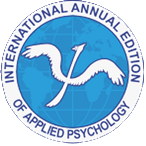Oculomotor Activity of the Russian Learners of English During the Perception of Verbal Stimuli in Russian and English Languages
Abstract
Utilising modern technologies in second language acquisition (SLA) studies widens the horizon for the researchers in this field. EEG, PET, fMRI and eye-tracking give an opportunity to investigate the processes involved in SLA which are concealed from the researchers. In the last decade eye-trackers have become more available, which has given a rise to the number of studies conducted with the use of this equipment. We used eye movement measures of first-language and second-language text reading to investigate peculiarity of oculomotor activity which the Russian learners of English demonstrate during the perception of verbal stimuli in Russian and English languages. The data show that the mechanisms of oculomotor activity during the perception of texts in English and Russian are different. It is found that fixation count and fixation frequency have maximum values for the text in Russian and these values are closer to the ones registered during the image perception. Saccade count and saccade frequency demonstrate maximum values during the perception of the text in English. Moreover, the study shows that some learners’ peculiarities of neuro- and psychodynamics correlate with the certain characteristics of the oculomotor activity registered during the perception of the stimuli in different languages.
- Reiterer, S., Pereda, E., & Bhattacharya, J. (2009). Measuring Second Language Proficiency with EEG Synchronization: How Functional Cortical Networks and Hemispheric Involvement Differ as a Function of Proficiency Level in Second Language Speakers. Second Language Research, 25, 77-106.
- Steinhauer, K. (2014). Event-related Potentials (ERPs) in Second Language Research: A Brief Introduction to the Technique, a Selected Review, and an Invitation to Reconsider Critical Periods in L2. Applied Linguistics, 35, 393-417.
- Indefrey, P., & Davidson, D. J. (2009). Second Language Acquisition. In L. R. Squire (Ed.), Encyclopedia of Neuroscience. London: Academic Press, 517-523.
- Ellis, R. (2008). The Study of Second Language Acquisition. 2nd Edition. Oxford: Oxford University Press. 1142 p.
- Abutalebi, J., Cappa, S. & Peranai, D. (2001). The Bilingual Brain as Revealed by Functional Neuroimaging. Bilingualism: Language and cognition, 4, 179-190.
- Toker, D., Conati, C., Steichen, B., & Carenini, G. (2013) Individual User Characteristics and Information Visualization: Connecting the Dots through Eye Tracking. In Proceedings of CHI 2013 ACM SIGCHI Conference on Human Factors in Computing Systems, 295–304.
- Nisiforou, E. A. & Laghos, A. (2013). Do the Eyes Have it? Using Eye Tracking to Assess Students Cognitive Dimensions. Educational Media International, 1-19.
- Nisiforou, E. A. (2013). Using Eye Tracking and Electroencephalography to Assess and Evaluate Students’ Cognitive Dimensions. Proceedings of the Doctoral Consortium at the European Conference on Technology Enhanced Learning 2013 co-located with the EC-TEL 2013 conference (EC-TEL 2013), 79-86.
- Tsianos, N., Germanakos, P., Lekkas, Z., Mourlas, C., & Samaras, G. (2009) Eye-tracking Users’ Behavior in Relation to Cognitive Style within an E-Learning Environment. In Proceedings of the 9th IEEE International Conference on Advanced Learning Technologies (ICALT), Riga, Latvia: IEEE Computer Society Press, 329–333.
- Van Gog, T. & Scheiter, K. (2010). Eye Tracking as a Tool to Study and Enhance Multimedia Learning. Learning and Instruction, 20. 95–99.
- Lupu, R. G. & Ungureanu, F. (2013). A Survey of Eye Tracking Methods and Applications. Buletinul Institutului Politehnic din Iaşi. Gheorghe Asachi Technical University of Iasi, 57-65.
- Roberts, L. & Siyanova-Chanturia, A. (2013). Using Eye-Tracking to Investigate Topics in l2 Acquisition and l2 Processing. Studies in Second Language Acquisition, 35, 213-235.
- Kang, H., 2014. Understanding Online Reading through the Eyes of First and Second Language Readers: An Exploratory Study. Computers & Education 73, 1–8.
- Rayner, K., & Duffy S. A. (1986). Lexical Complexity and Fixation Times in Reading: Effects of Word Frequency, Verb Complexity, and Lexical Ambiguity. Memory & Cognition, 12. 590-606.
- Rayner, K. (1998). Eye Movements in Reading and Information Processing; 20 Years of Research. Psychological Bulletetin, 124, 372-422.
- Whitford, V. & Titone D. (2012). Second-Language Experience Modulates First- and Second-Language Word Frequency Effects: Evidence From Eye Movement Measures of Natural Paragraph Reading. Psychonomic Bulletin & Review, 19, 73-80.
- Singh, N. & Mishra, R. K. (2015). The Modulatory Role of Second Language Proficiency on Performance Monitoring: Evidence from a Saccadic Countermanding Task in High and Low Proficient Bilinguals. Frontier Psychology. 5. 14-81.

